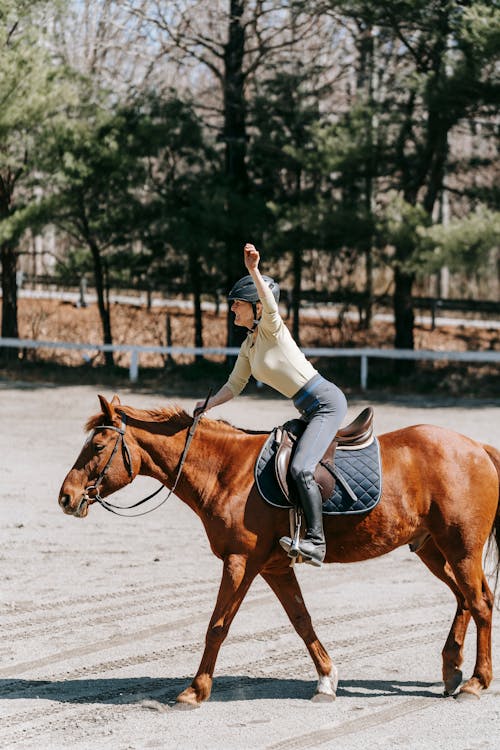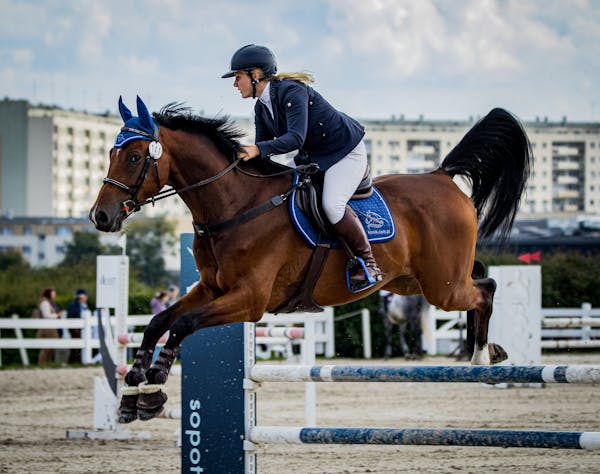Common Equine Body Language Signals
Horses communicate primarily through body language, and understanding these signals is crucial for effective interaction. Ears are a key indicator: forward-facing ears show interest, while pinned-back ears indicate anger or discomfort. A relaxed, loose tail suggests calmness, whereas a swishing tail can signal irritation. Watch for subtle cues in their eyes; wide eyes can denote fear, while half-closed eyes often mean relaxation. A horse that nudges or nibbles you may be seeking attention or showing affection. Recognising these signals helps you respond appropriately to your horse’s needs and emotions.
Building Trust with Your Horse
Building trust with your horse is essential for a strong and harmonious relationship. Start by spending quality time with your horse outside of riding, such as grooming, hand-walking, or simply being present in their space. Consistency in your actions and responses helps your horse feel secure and understand what to expect from you. Positive reinforcement, like treats or praise, can reward good behaviour and strengthen your bond. Always approach your horse calmly and confidently, as they can sense your emotions. Patience and respect are key; trust is built over time through mutual understanding and positive interactions.
Strategies for Dealing with Problem Behaviours
Addressing problem behaviours in horses requires a calm, consistent, and patient approach. Identify the root cause of the behaviour, whether it’s fear, pain, confusion, or a lack of proper training. For instance, a horse that bucks might be reacting to discomfort from poorly fitting tack or physical pain. Use positive reinforcement to encourage desired behaviours, rewarding your horse for calm and cooperative actions. Avoid punishment, as it can escalate fear and resistance. Work with a professional trainer if needed, especially for serious issues. Building a solid foundation of trust and clear communication is essential for resolving problem behaviours.
The Role of Consistency in Training
Consistency is a cornerstone of effective horse training. Horses learn through repetition and clear, predictable cues. Consistent training routines help your horse understand what is expected and build confidence in their actions. Ensure that your aids (signals from your legs, hands, and voice) are always the same for specific commands. Consistency in handling and expectations from all people interacting with the horse prevents confusion and reinforces learning. Regular practice and a stable routine create a reliable framework for your horse to progress in their training, leading to a more responsive and well-behaved partner.

Communicating Effectively During Riding
Effective communication while riding is essential for a successful partnership with your horse. Use clear, consistent aids to convey your commands. Your seat, legs, and hands work together to guide your horse; for example, apply leg pressure to encourage forward movement and use your reins to steer or stop. Maintain a balanced, relaxed posture to help your horse move freely and comfortably. Be mindful of your horse’s responses and adjust your aids accordingly. Positive reinforcement, such as verbal praise or gentle pats, reinforces good behaviour. Remember, riding is a dialogue; listen to your horse’s signals and respond with clarity and patience.
Professional Insights on Horse Behaviour
Professional insights can greatly enhance your understanding of horse behaviour. Experienced trainers and equine behaviourists offer valuable knowledge about how horses think, learn, and react. They can provide techniques for addressing specific behavioural issues and improving communication. Attending clinics, workshops, and seminars can expand your knowledge and skills. Reading books and articles by renowned equine experts also offers in-depth perspectives on horse psychology. Engaging with professionals allows you to ask questions, seek advice, and gain practical tips tailored to your horse’s unique personality and needs, fostering a more harmonious relationship.


